The first time I tasted Massolino’s wines was amongst 10 Baroli from the 2004 vintage devoured in 2015. The Massolino’s sat firmly in the good half. The standard Barolo was a stunner. The Massolino Dieci Anni (10 years) Vigna Rionda Riserva was a revelation. Only released in the best years it was superb. Balanced, complex, so inviting.
Today we offer the 2016 Barolo, Cru’s Margheria, Parussi and Parafada as well as the 2014 Vigna Rionda in large format.
- Wine must be paid for in full open order confirmation.
- Wines will be delivered in October 2020
- This offer is only for the Cru’s in magnum and larger size.
- 750ml bottles will be offered on arrival later in the year.
Some exciting news for the future, Massolino now have agreements to access some quality Barbaresco fruit, including from the vineyard of Starderi. If Olek Bondonio’s 2016 Starderi is anything to go by, we’re in for some fun starting 2022!
About Massolino
Founded in 1896, Massolino Winery, is based in and around the town of Serralunga, one of the prime sub-zones of the Barolo DOC.
The Massolino family’s greatest asset is of course their 23 hectares of (mostly) Serralunga vineyards, including choice parcels of such famous sites as; Margheria, Parafada and the legendary Vigna Rionda. We say ‘mostly’ as the Massolino clan recently purchased a slice of the Parussi cru in Castiglione Falletto. Serrralunga, on the eastern edge of the Barolo DOCG, produces some of most profound and long lived Barolo. It is the home of great names such as Giacomo Conterno and Bruno Giacosa’s Falletto vineyard. The wines often have an extra stuffing of intense Nebbiolo fruit as well as a remarkable minerality that plays on both the freshness of the tannins and gives the wines a certain ferrous edge when young.
It is fair to say that Massolino holds the most remarkable collection of vineyards in Serralunga, amongst the smaller, quality focused producers anyway. The quality strides at this estate over the last 10-15 years have been remarkable with significant advances made, particularly in the vineyards. Certainly there has also been refinements in the cellars, firstly by Franco Massolino and then by current winemaker Giovanni Angeli (ex Vajra) who has been working with Franco since the 2005 harvest. As always however, it has been the work in the vineyards and the search for expressive and perfectly ripe fruit that has driven the rise in quality at this estate. The resultant improvement here has been very good news for both the commune and Barolo in general. Today the wines of Massolino sit comfortably among the finest of the region – they are wines of wonderful purity and elegance. They are exclusively aged in large casks, so they are ‘traditional’ and yet they offer the best of the “old” and “new” worlds: pure, aromatic, textural, deeply flavoured wines that are at the same time precise, vibrant and distinctly regional. These are wines that score extremely highly on our deliciousness scale. Equally important, these wines are remarkably well priced when compared to the other top producers of the area.
About the 2016 Massolino Vintage
2016 has come at just the right time. We have a number of winemakers with incredible experience and wine wisdom. The vineyards in Barolo are in the best condition they’ve been in with incredible detail going into their care.
Combined we have a situation where vignerons are in the best possible position to make the most of the great fruit yielded by the 2016 harvest!
When you compare the 2015 & 2016 vintages you see the difference between a warmer vintage with a shorter ripening period and a cooler one with the longest ripening period in memory.
Nebbiolo responds beautifully to a cooler longer ripening. Once it reaches sugar level high enough to make a wine around 14-14.5% alcohol the sugar levels stop increasing, it tends to hold its acid and the tannins so important to the insane mouthfeel of Nebbiolo ripen and increase in depth.
Such vintages tend to offer wines with more perfume, energy, and, vitality.
“Massolino turned out set of striking Barolos in 2016. The wines are vibrant and super-expressive of site. In recent years, the Massolinos have moved towards gentler winemaking, which really allows the purity of the fruit, while retaining the classic style the estate is known for. Readers will also want to be on the lookout for the 2014 Barolo Riserva Vigna Rionda, one of the great wines of that year, but also one of the most profound Riondas Massolino has made to date.” Antonio Galloni, vinous.com
🎧 Listen as Giovanni introduces the Wines and Vineyards
Recorded during Giovanni’s last visit to Australia. He shared his insights of the 2015 Barolos. Although the 2016’s will undoubtedly reflect the differences in the vintage, the discussion remains relevant.

2017 Langhe Nebbiolo & 2015 Barolo DOCG
Langhe Nebbiolo is a combination of younger vines where root penetration is less deep and they have less access to water and microelements that are important for the quality of fruit. DOCG fruit that hasn’t reached appropriate quality to move into DOCG. Soils for the vineyards supplying these wine are good for water retention for vine growth and acid retention for wine balance. Langhe Nebbiolo sees 1 year in large casks up to 10,000L. Large cask size helps the wines retain freshness and does not impart any oak character. Classic Barolo, warm dry summer, with good water availability from the good winter snow providing water reserves. Early picking 29 September, normally, mid-October. They had phenolic ripeness, good sugar and fruit.
Using shorter maceration to retain finesse and balance. Gentler handling of the fruit. Have introduced oak fermenters for fermentation, providing micro-oxygenation to stabilise tannins. We have explored this in the Wine Decoded Bathtub Wineamaking Project.
2015 Cru’s Magheria, Parafada and Parussi
In the Vineyards
Detailed viticulture has become much more the norm over the last few decades. The efforts in the vineyards making them more sustainable with chemical usage dropping. In response to a warming climate many practices are employed to help water retention in the soils and additional of natural nutrients. Mustard cover crops with deep root penetration help oxygen and water make its way into the subsoil. Pea add nitrogen. Candling or wrapping of the excess shoot growth instead of mechanical trimming, giving the vines a hair cut, helps with water and acid retention. In turn the acid retention helps keep fruit flavours fresh. Combined this making wines that are much more approachable in their youth yet still have great ageing potential.
Overall seeking a more balanced vineyard to give more balanced wine.
Margheria – Serralunga. Atypical Serralunga soil. Less clay, a little more sand. Makes for a wine that is much more expressive and approachable even at release. Giovanni suggests it is more similar to the wines of western Barolo with softer tannins.
Parafada – Serralunga. Soil with lots of clay and more compact soil. Typically shows much of tannin and masculinity. More typical of Serralunga. Giovanni feels the vines have really found a balance over the last few years and the resulting wines are good drinking even in the first few years.
Parussi – Castiglione Falleto. From the north side. Lighter soil with less clay and more limestone, silt and sand. Tannins are raw and rustic in the beginning and take more time for the tannins to become as elegant as the tannins of Serralunga.
2013 Vigna Rionda
Incredible variation in aspect over short distances across Serralunga. This results in the possibility for diversity of styles across the region. Vigna Rionda is one of the special sites, very complex soils, Giovanni considers 2013 a classical vintage similar to those both the 1990’s. Cooler vintage than 2015. Long slow maturation. A short winter resulted in earlier bud-burst, a long slow maturation, cooler temperatures offering more rustic tannins. Nebbiolo finished picking on the 5th of November 2-3 weeks after normal. The rustic tannins demanded additional oak maturation. Extending from the typical 3½ years to 5 years in oak to achieve balance and integration between acidity and tannins. 2013 will overall requires a little more time.
2006 short and dry with little water available. Vines were stressed for a few days. Wine is very concentrated, powerful and rich. Typical of a vintage when vines are stressed. In these circumstance, vines produce polyphenols to rippen seeds to reproduce and survive. 2006 Barolo are very rich in polyphenols (tannins). Normally 3-3.5 grams per liter polyphenols in 2006 levels reached 6g/L.
2001 perfect weather conditions, good water reserves, no temperature peaks. Picked by 15 October. Very complete wines, good power, great acidity, fresh and vibrant with fine and elegant tannins.
Wine Decoded’s Chief Wine Hacker – Paul Kaan’s Thoughts on the 2015’s
The 2015’s area great set of wines. The quality in the DOCG Barolo or Normale alone is exceptional. The 3 Cru’s are stunners. 3 unique personalities. All with great complexity and layering. The wines are elegant, sophisticated, with entrancing perfumes and the tannin profiles of each are individual. The vibrancy and energy of the wines with their trademark line and length of acid shines through. They are all of exceptionally high quality, layered and just divine. Giovanni raises such well rounded harmonious wines. Almost Burgundian in nature.
Barolo DOCG Tasting this yesterday, my first thoughts were this was the best DOCG I’d had from Massolino. Thoughts echoed shortly after by winemaker Giovanni Agnelli. The wine has a lovely line and length. Great purity, initially it seemed tightly coiled, opened quickly to reveal an enticing perfume, generosity of fruit, layering and savouriness. Add to that a little liquorice and tar. The wine has great harmony, depth and length. Just delicious.
Margheria – Serralunga d’Alba. A beautiful expression of Nebbiolo. Precise, you see a jump in depth, length and layering for the Barolo DOCG. The signature texture of this and all the Baroli is beautiful, natural, layered grape tannins. In the case of Margheria they are incredibly supple. The core of fruit is exceptional with ripe, mid to dark sour cherries. It almost feels a little bit more like something from the Commune di Barolo. It draws you into the glass, one of those wines that sees your heart flutter a little on smelling it.
Parafada – Serralunga d’Alba. These are Massolino’s oldest vines. The wine is much tighter than the expressive Margheria at the moment. The tannins bolder and firmer, and, of incredible quality and depth. Again the core of fruit is exceptional with great depth and length. In a straight jacket at the moment, it is just waiting to explode! And, undoubtedly will.
Parussi – Castiglione Falletto. Excellent energy in the Parussi, great to see it back in the line up after a hiatus in 2014. Immediately more open than the Parafada. Powerful and bold, yet sophisticated at the same time. Again great depth and length. Exceptional core of fruit. Those tarry characters and line and length of acid showing again.
2013 Vigna Rionda Riserva What a difference a couple of years makes. The 2013 Vigna Rionda saw 5 years in Botti compared to the normal 3 ½ followed by time in bottle. Loads of intrigue. Expressive perfume. A little lift. It has such a powerful persistent core of fruit. The 2013 reveals slightly more rustic, edgy tannins. They’re playful, and, I like them! The layering the wine lifts another notch compared to the ‘standard’ Cru’s. We also tasted the 2006 and 2001 Dieci Anni releases. 2006 showing a bold, dark and brooding, moving into that third phase of development with loads of truffly secondaries. The 2001 perhaps at it’s peak, quite developed, elegant, delicate, and fun. Loads of complexity, leather, still a lovely core of fruit and fine acid. The fruit building on the plate after swallowing!
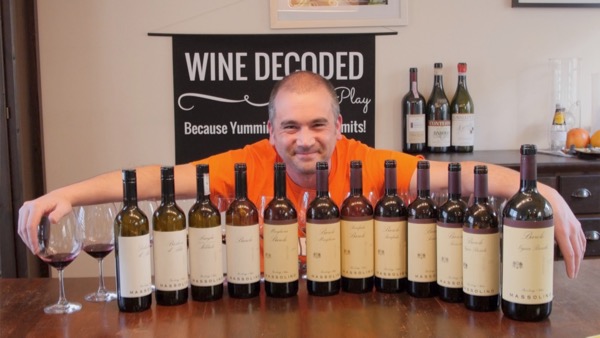
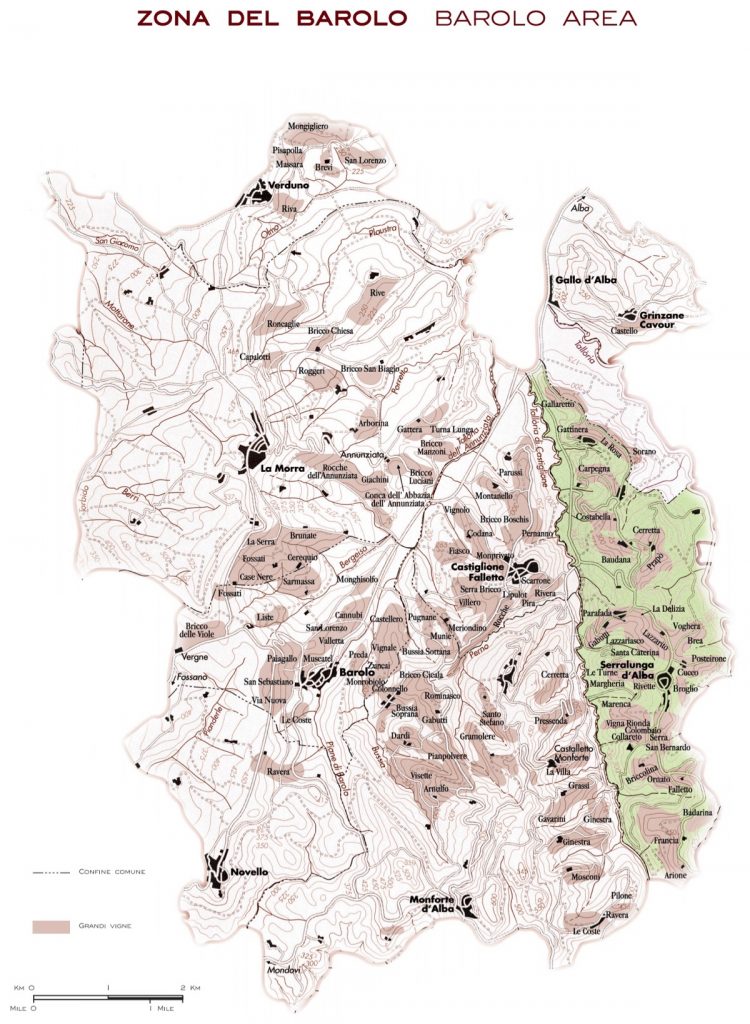

Your tongue will thank you!
About the Wines
Barolo DOCG Margheria 2016
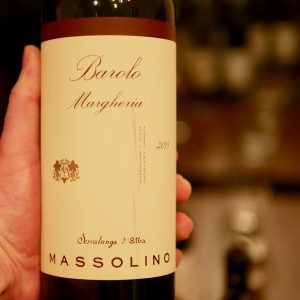 The Margheria vineyard is one of Serralunga’s most important and illustrious sites. The Massolino family bought their first parcel here in 1964 and the rest throughout the ‘70s. They currently hold 1.5-hectares making them one of the three main owners in this 8.1-hectare vineyard, along with Gaja and Luigi Pira. Sitting at 340-metres above sea level, Margheria is a very chalky vineyard with a good percentage of sand, which brings perfume, finesse and a spicy, mineral complexity. In a sense, it is atypical of Serralunga in terms of both the sandiness in the soil and the elegance and prettiness of the wine. It is also the Massolino wine that drinks best when young. This was aged in botti for around 24 months before bottling and then remained in bottle for a further year before release. True to form this is so perfumed and pretty with bright cherry, grenadine and floral, sappy aromas and flavours. So delicious now with food but Galloni is quite right to suggest that it will only get better and better with age.
The Margheria vineyard is one of Serralunga’s most important and illustrious sites. The Massolino family bought their first parcel here in 1964 and the rest throughout the ‘70s. They currently hold 1.5-hectares making them one of the three main owners in this 8.1-hectare vineyard, along with Gaja and Luigi Pira. Sitting at 340-metres above sea level, Margheria is a very chalky vineyard with a good percentage of sand, which brings perfume, finesse and a spicy, mineral complexity. In a sense, it is atypical of Serralunga in terms of both the sandiness in the soil and the elegance and prettiness of the wine. It is also the Massolino wine that drinks best when young. This was aged in botti for around 24 months before bottling and then remained in bottle for a further year before release. True to form this is so perfumed and pretty with bright cherry, grenadine and floral, sappy aromas and flavours. So delicious now with food but Galloni is quite right to suggest that it will only get better and better with age.
The 2016 Barolo Margheria is super-refined and elegant, but it is also classically austere, as so many top wines are in this vintage. Bright red berry fruit, wild flowers, mint, blood orange, rose petal and cinnamon all grace this very pretty, nuanced Barolo. The Margheria is medium in body, and despite its austerity, it is also very pretty, not to mention incredibly inviting. It will be even better in another few years, once the tannins soften. Readers will have to be patient.
Barolo DOCG Parussi 2016
The vineyard “Parussi” is located in Castiglione Falletto.
The excellent south-easterly/south-westerly exposure of the vineyard, situated on the crest of the hill, in the Parussi, sub-zone, guarantees the production of extraordinary quality grapes, with the tannic structure and expression of the land of Castiglione Falletto. Altitude: 300 m above sea level
Total surface area: 1.3 hectares
Soil composition: calcareous, clayey and sandy.
Training system and vine density: traditional Guyot, with about 5,000 vines per hectare.
Yield per hectare: 4.5 tons.
Average age of vines: 40 years.
Harvest: manual, in the second half of October.
First year of production: 2007.
Total bottles produced: from 4,000 to 5,000 0.75-litre bottles (depending on the vintage).
Alcohol content: 13.5-14.5% by Vol. (depending on the vintage).
Vinification and ageing: a traditional Barolo, 15-20 days of fermentation and maceration at 31-33°C; aged in oak barrels for about 30 months and left to mature in bottles placed in special dark, cool cellars for about a year.
Note: the excellent south-easterly/south-westerly exposure of the vineyard situated on the crest of the hill, in the Parussi sub-zone, guarantees the production of excellent quality grapes. The very calcareous soil conveys a remarkable structure with quite strong tannins.
The 2016 Barolo Parussi is the most overt and fruity of the 2016s. That is not a bad thing at all, as it gives the wine striking immediacy and mid-palate sweetness. Succulent red and purplish berry fruit, spice and mint come together in the glass. Silky, floral and medium in body, the Parussi captures all of the sensuality that is typical of the Barolos of Castiglione Falletto. Best of all, the Parussi will drink well earlier than the wines from Serralunga will.
Barolo DOCG Parafada 2016
In 1957, Parafada became the Massolino family’s first iconic parcel of Serralunga and it is still home to their oldest vines. Massolino own a 1.13-hectare parcel in this 7.92-hectare vineyard. It’s a steep vineyard that rises from 300 to 340-metres a.s.l. and faces due south, catching the full face of the sun. These factors, plus the denser, more compact, lime/clay soils typically result in the richest, most powerful wine of the three Serralunga crus. Again, this is a wine that is getting better and better with each vintage, producing better balanced and more delicious wines than ever before. Much denser than the Margheria, this offers layers of red plum, orange zest, tobacco and earthy aromas and flavours and a chewy, structured persona. Again, it is great with the right food and a good decant now but will start to be at its best from 5-10 years.
The 2016 Barolo Parafada is fabulous. In fact, the 2016 is one of the best - if not the best - Parafadas I have ever tasted at Massolino. The natural richness of this site marries with the translucence of the year to produce a weightless yet powerful, highly nuanced Barolo that hits all the right notes. Dark cherry, lavender, spice, mint, rose petal and licorice develop in the glass, but it is the interplay of richness and lightness that elevates the Parafada into the realm of the truly sublime. I have never tasted a Parafada like this here. What a wine!
Barolo DOCG Vigna Rionda Riserva 2014
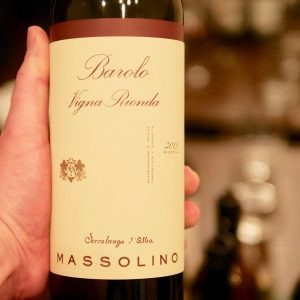 “If you ask a resident of Serralunga to name the town’s three finest vineyards, one of the trio is sure to be Vigna Rionda … It is an historic vineyard. The quality of its grapes has been celebrated for hundreds of years and the greatest names in the Langhe have for many years made special efforts to acquire grapes from Vigna Rionda.” Slow Food’s A Wine Atlas of the Langhe (2008)
“If you ask a resident of Serralunga to name the town’s three finest vineyards, one of the trio is sure to be Vigna Rionda … It is an historic vineyard. The quality of its grapes has been celebrated for hundreds of years and the greatest names in the Langhe have for many years made special efforts to acquire grapes from Vigna Rionda.” Slow Food’s A Wine Atlas of the Langhe (2008)
Vigna Rionda is historically the most revered vineyard of Serralunga, the source of some of the greatest, finest, yet most robust and long-lived Barolo. The soil here is similar to the Parafada vineyard (limey/chalky marls), yet it is deeper again, there is more chalk and also a higher concentration of minerals and oxidized iron elements. The deeper soils, the altitude of 330 metres above sea level and the protection from northern winds and frost that the south/southwestern slopes affords means that Vigna Rionda has a longer growing season than the other crus. All these factors combine to produce a terroir that gifts wines with an optimum balance of perfume, finesse and structure rarely found elsewhere in Barolo. It also produces a wine with excellent acidity and tannins that require a longer ageing in botti and bottle. That is why it is released with a minimum six years of age.
The Massolino family are the largest holders in the Vigna Rionda with 3.5 hectares (2 planted to Nebbiolo). The wine from this exceptional site begins life as a coiled spring, which is why Massolino releases it with extra age: at six years (for the standard Riserva release) and ten-plus years for the Dieci X Anni release. With enough age, Vigna Rionda blossoms into an intensely perfumed, ultra-fine, pure and succulent wine with very fine tannins. Drawn from 38-45 year old vines, Franco Massolino expresses that the 2011 Riserva has been building up to a simmer; that, in Piemonte, the top growers are whispering that the best 2011s are much closer to the quality of 2010 than initially thought. Here’s a case in point, though the style is more swashbuckling – open and succulent – than its 2010 counterpart. The notes below do the wine justice. So much personality; beguiling purity of soft fruit, balanced and penetrating, with streamlined acidity and a lick of oyster shell contributing vineyard flavour. A very, very impassive, resonant Vigna Rionda. Oh, Serralunga! as Luigi Veronelli might have sighed.
The 2014 Barolo Riserva Vigna Rionda is a stunning wine. Sweet, perfumed and deep, the 2014 is off-the-charts great. Dark red and purplish berry fruit, mint, lavender, spice and hard candy infuse the 2014 with striking layers of nuance. But what really impresses about the 2014 is its depth and huge vertical build. All the elements fall into place in a sumptuous, deep Barolo that screams with character. Beams of tannin punctuate the finish. Massolino's 2014 is one of the greatest Vigna Riondas I have ever tasted.
Place Your Order
Giovanni, the Serralunga Master has been at it again!
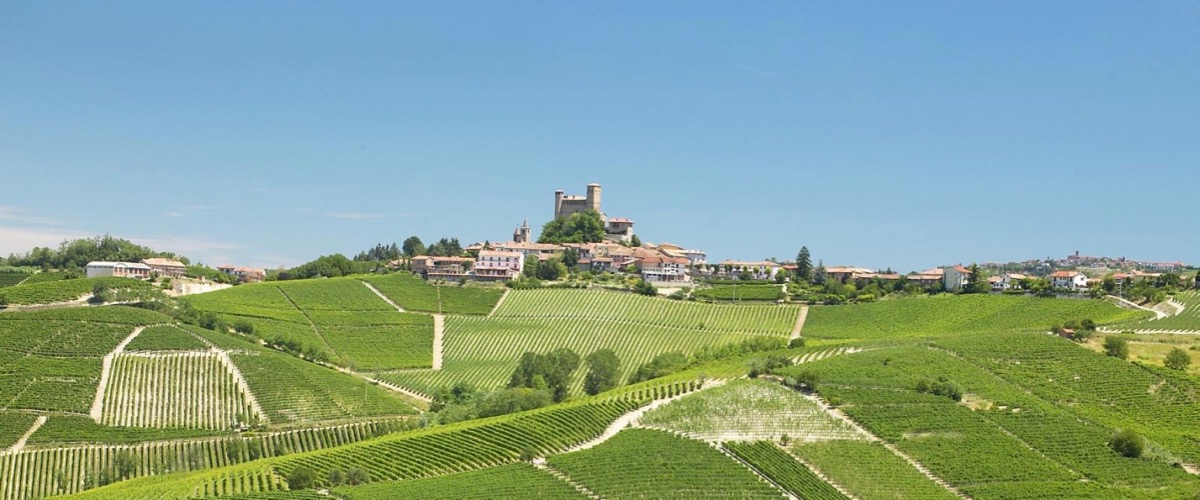



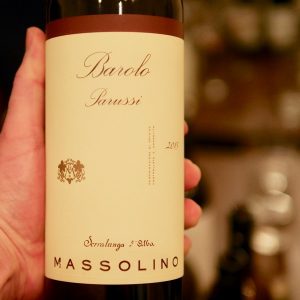
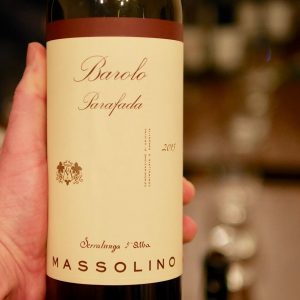
You must be logged in to post a comment.